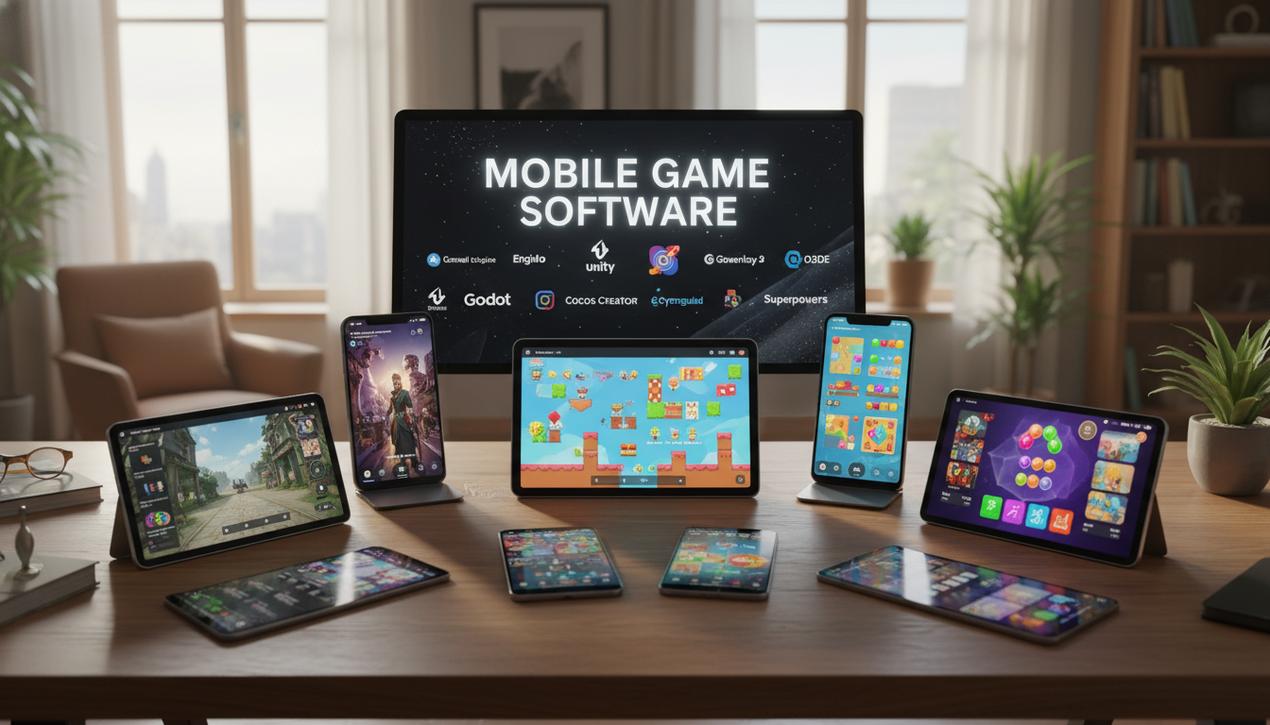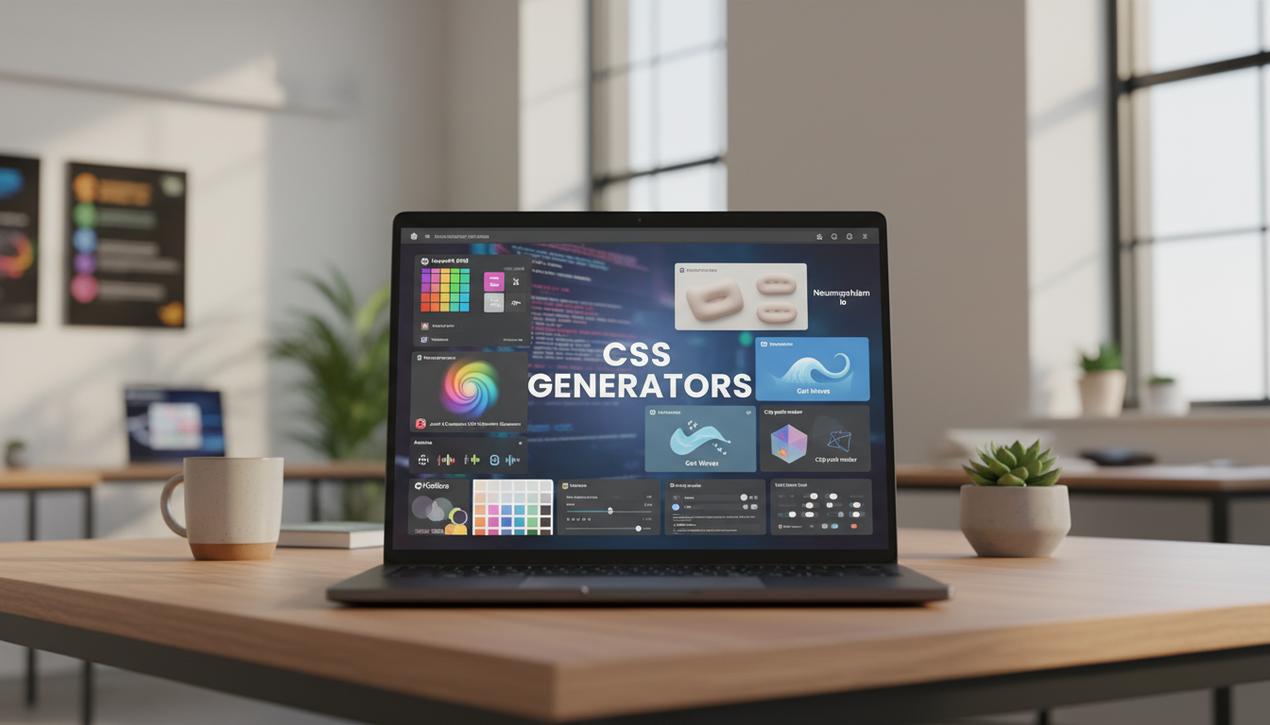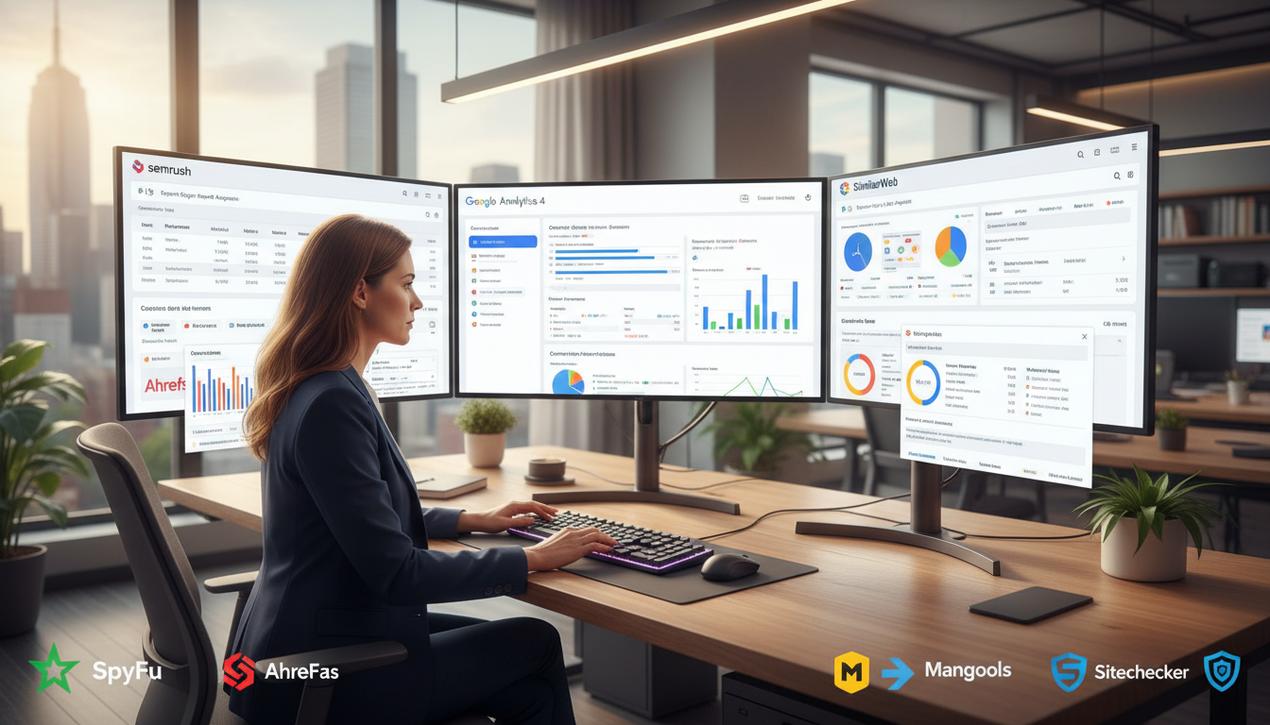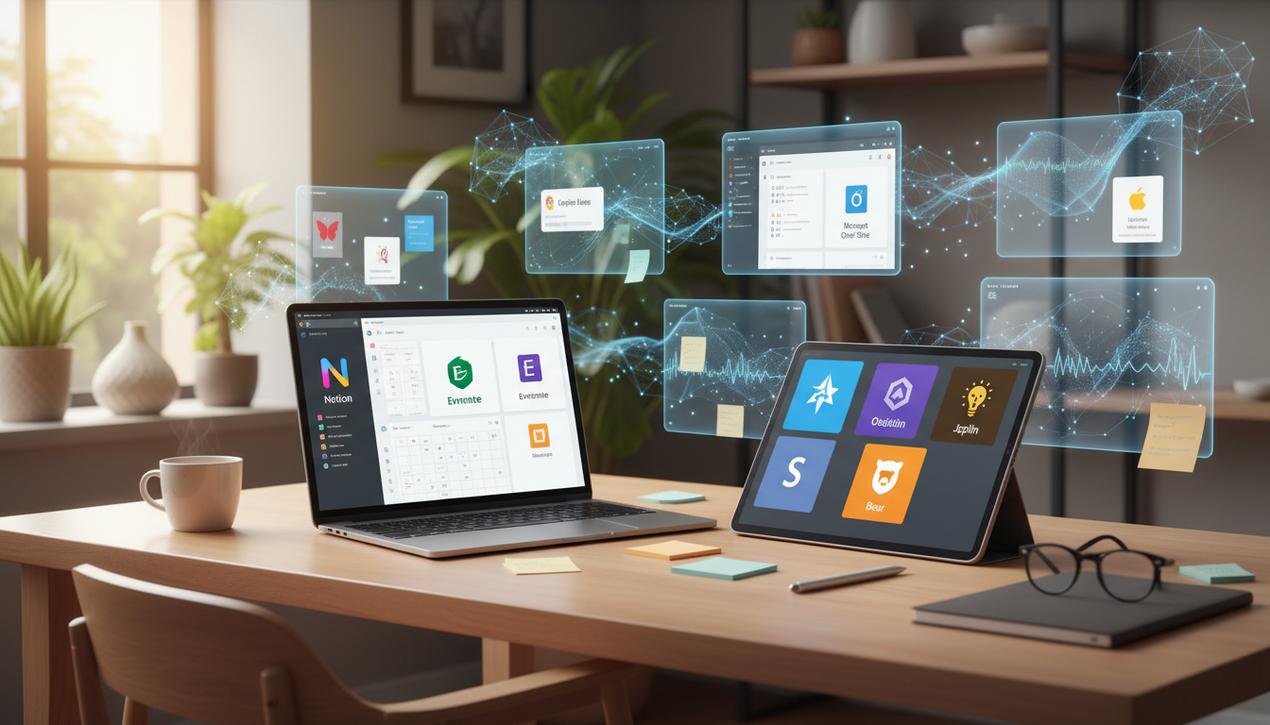A Complete Guide to Mobile Game Development Software


The mobile gaming industry is experiencing explosive growth with no signs of slowing down. Projections for 2025 show the global mobile games market is expected to generate over $108 billion in revenue, accounting for a significant portion of the entire video game market. This boom is driven by increasingly powerful smartphones and the rise of accessible development tools. The days when creating a game was reserved for large studios with massive budgets are long gone. Today, whether you’re a seasoned developer or a passionate beginner with no programming knowledge, a wide array of software is available to turn your vision into a reality. This guide presents the best solutions available to help you create the next chart-topping hit for app stores.
Why Is Mobile Game Development Exploding?
The rise of mobile gaming is no accident; it’s the result of several converging technological and economic factors. Firstly, the processing power of our smartphones has multiplied, turning them into pocket-sized consoles capable of running graphically complex 3D games and offering immersive experiences. Secondly, the accessibility of creation tools has completely changed the game. Modern game engines feature intuitive visual interfaces, pre-made templates, and drag-and-drop functionalities that significantly lower the barrier to entry. This technical simplification allows a new generation of creators to get started without needing to master complex programming languages. The market itself has become extraordinarily lucrative, with varied business models ranging from in-app purchases to subscriptions, attracting independent developers and large studios alike.
The Top 12 Software for Creating Your Mobile Game
Choosing the right software is a critical step that will define the scope of your project, its complexity, and the time required for completion. Here is a selection of the 12 best platforms for getting started in mobile game development in 2025.
1. Unreal Engine
Developed by Epic Games, the creator of Fortnite, Unreal Engine 5 (UE5) is the most powerful game engine on the market, renowned for its photorealistic graphics capabilities. It’s ideal for ambitious 3D projects and offers cutting-edge tools for virtual and augmented reality. Although it has a steep learning curve, its visual scripting system, Blueprints, allows for the creation of complex game logic without writing a single line of code. It is a preferred choice for professionals aiming for console-quality visuals.
2. Unity
Unity is the world’s most popular game engine, used by nearly half of all developers. Its greatest strength lies in its versatility and flexibility. It allows for the creation of both 2D and 3D games and their deployment on over 25 different platforms, including iOS and Android. Unity has a massive Asset Store and a very active community, which greatly facilitates problem-solving and learning. It caters to both motivated beginners and professional studios.
3. Godot Engine
Godot is an open-source and completely free alternative that is gaining popularity every year. It stands out for its lightweight nature and intuitive development approach. Its system of “scenes” and “nodes” makes project organization very clear. Godot is particularly appreciated for 2D game creation, although its 3D capabilities are constantly improving. Its dedicated scripting language, GDScript, is very similar to Python and easy to learn, making it an excellent choice for independent developers.
4. GameMaker Studio
Ideal for beginners and intermediate developers, GameMaker Studio excels in 2D game creation. It offers a very intuitive drag-and-drop system that allows for the quick creation of a functional game without code. For more advanced users, it also provides its own programming language, GML (GameMaker Language), which opens up a much wider range of possibilities. It’s the platform behind indie successes like Undertale and Hotline Miami.
5. Construct 3
Construct 3 is a game engine entirely based in a web browser, meaning you don’t need to install anything. It is fully based on visual event-driven programming, making it perfect for beginners, educators, and game jams. Specializing in 2D HTML5 games, it allows for one-click export to Android, iOS, and the web. Its ease of use enables rapid prototyping of game ideas at an impressive speed, without ever touching a line of code.
6. GDevelop
Similar to Construct, GDevelop is another open-source, no-code option. It uses an event-based logic system that is easy for non-programmers to understand. GDevelop is cross-platform and allows for publishing games on the web, PC, and mobile. It is particularly suitable for small to medium-sized projects and is an excellent starting point for those who wish to learn the basics of game logic before moving on to more complex tools.
7. Cocos Creator
The successor to Cocos2D-x, Cocos Creator is an open-source, lightweight, and efficient game engine specializing in 2D games but with expanding 3D capabilities. It uses standard languages like JavaScript and TypeScript, making it accessible to web developers. It is very popular in the Asian market and is known for its excellent performance on mobile devices. Successful games like Clash of Kings were developed with this technology.
8. CryEngine
Historically known for its stunning graphics with games like Crysis and Far Cry, the CryEngine is a top-tier 3D engine. Like Unreal Engine, it is primarily aimed at AAA projects seeking state-of-the-art visual rendering. Although very powerful, its documentation is less extensive and its community smaller than those of Unity or Unreal, making it more challenging for beginners to approach.
9. O3DE (Open 3D Engine)
Formerly known as Amazon’s Lumberyard, O3DE is now an open-source project managed by the Linux Foundation. This 3D engine is designed to be modular and flexible, allowing developers to fully customize their creation pipeline. It natively integrates cloud services, which is an asset for developing online and multiplayer games. It is aimed at technical teams with specific needs.
10. GameSalad
GameSalad is one of the pioneers of no-code game development. Its drag-and-drop interface is so simple that it is often used in schools to teach the basics of game creation. It is a perfect tool for creating simple arcade games and prototypes quickly. Although limited for complex projects, it remains an excellent entry point into the world of mobile game development.
11. Buildbox
Buildbox is another major player in the no-code development space, specifically designed for creating hyper-casual mobile games. Its drag-and-drop interface allows users to build games without writing code, focusing on rapid prototyping and market testing. Many top-charting hyper-casual games were created using Buildbox, making it a great choice for developers looking to quickly enter this lucrative market segment.
12. Solar2D (formerly Corona SDK)
Solar2D is a free and open-source, cross-platform engine perfect for building 2D games and apps. It uses the easy-to-learn Lua scripting language, which is known for its speed and lightweight nature. Solar2D is highly regarded for its performance on mobile devices and its fast development cycle, allowing developers to see changes instantly in a live simulator. It’s an excellent choice for both indie developers and studios focusing on 2D projects.
Choosing Your Game Engine: With or Without Code?
The question of “code” is often central when choosing software. Both approaches have their advantages and cater to different profiles. Understanding their specifics is essential to make an informed choice that matches your skills and the ambition of your project.
No-Code Platforms: The Ideal Entry Point
Tools like GDevelop, Construct 3, or Buildbox are designed to be accessible to the widest possible audience, a trend also seen with the best no-code website builders. They replace traditional programming with visual logic systems, event sheets, or drag-and-drop interfaces.
- Advantages: The learning curve is almost non-existent, allowing you to create a playable prototype in just a few hours. This is extremely motivating and perfect for learning the fundamental concepts of game design without the technical barrier of code.
- Disadvantages: This simplicity comes at a cost. You will often be limited by the features offered by the platform. For very specific game mechanics or advanced performance optimization, no-code solutions may fall short.
Professional Engines: Power and Flexibility
Platforms like Unity, Unreal Engine, or Godot represent the industry standard. Although they offer visual tools to simplify certain tasks, their full potential is unlocked through programming (C# for Unity, C++ for Unreal, GDScript for Godot) with the help of some of the top C++ IDEs.
- Advantages: There are no limits to what you can create. These engines give you complete control over every aspect of your game, from graphics and physics to artificial intelligence. They offer optimal performance for complex games.
- Disadvantages: The learning curve is much steeper. You need to invest time to learn both the engine and its associated programming language. These tools can be overkill for very simple projects.
2025 Trends to Watch in Mobile Gaming
The mobile gaming market is constantly evolving. To create a successful game, it is crucial to understand the trends shaping player expectations and monetization strategies. In 2025, several key trends are clearly emerging and influencing how games are designed and developed.
The Rise of Hybrid-Casual Games
One of the most significant trends is the rise of “hybrid-casual” games. These games combine simple and accessible core mechanics, typical of casual games, with deeper meta-game systems (like collection, customization, long-term progression) inspired by mid-core games. This approach helps attract a broad audience while promoting better retention and more elaborate monetization strategies, blending ads with in-app purchases.
Integration of AI and Augmented Reality
Artificial intelligence is no longer just for game enemies. It plays a growing role in procedural content generation, with many using top AI text generators for dialogue, personalizing the player experience, and dynamically balancing difficulty. At the same time, augmented reality (AR) continues to mature. Beyond the “Pokémon GO” effect, it offers innovative possibilities for anchoring game experiences in the real world, creating unique social interactions.
Cloud Gaming and Cross-Platform Play
With the rollout of 5G, cloud gaming is gaining traction on mobile. This technology allows for streaming console-quality games directly to a smartphone, without requiring a powerful device. As a result, mobile gamers’ expectations for graphic quality and game depth are increasing. Developers must increasingly think of their creations as cross-platform experiences, where a player can start a game on their PC or console and continue it on their mobile, thanks to cloud save synchronization.
The landscape of mobile game creation tools is richer and more accessible than ever. Whether you’re an artist looking to bring your universe to life without writing code, or a programmer aiming to push technical boundaries, there is a solution tailored to your profile and project. No-code platforms like Construct 3 or GDevelop allow you to quickly bring an idea to fruition, while giants like Unity and Unreal Engine offer limitless power for the most ambitious projects. The best advice is to start small, experiment with different tools to find the one that suits you best, and lean on the vast online communities to learn and grow. The adventure of creating your own mobile game has never been more within reach.




